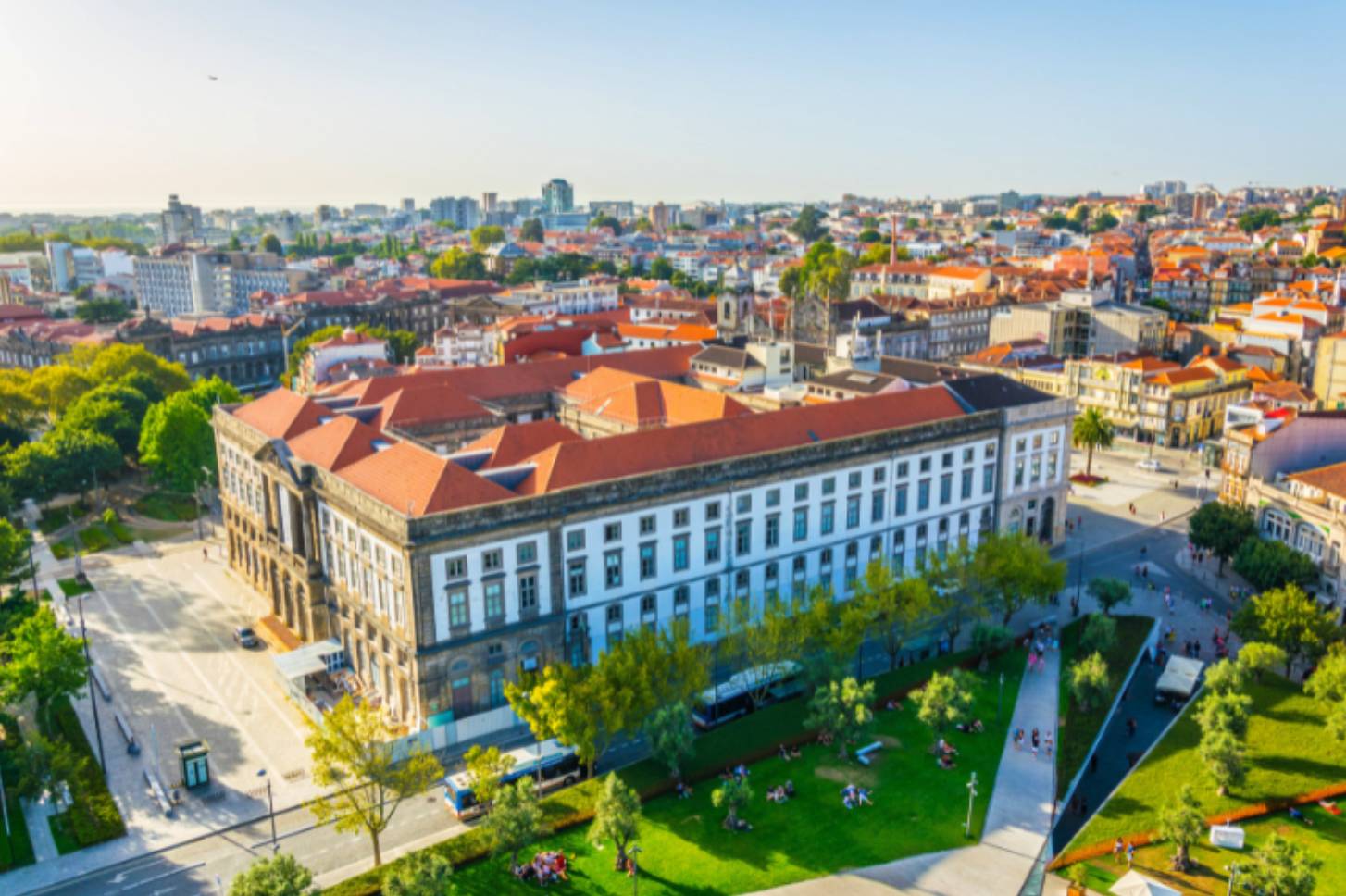
Is living in the north of Portugal worth it?
Is living in the north of Portugal worth it? Why are ex-pats moving here? Here’s what you need to know about the north of Portugal.
Article by Viv Europe
August 5, 2022
read the full article here
Living in Portugal
27 01 2023
Portugal is a relatively small nation but packs a bunch of beauty into such a small space. One place with a lot to show for itself is the north of Portugal. While regions like the Algarve and Lisbon are popular among travel communities, the north of Portugal is one region that’s just starting to be discovered.
If you’re wondering what it’s like living in the north of Portugal, this post will give you a detailed rundown of all you need to know about the northern side of Portugal. We attempt to answer questions about everyday living and advise on the best cities for ex-pats in this region of Portugal.
Stick around to find out more!
Living in the north of Portugal: what is it like?
The north of Portugal is home to about 3.6 million people, accounting for nearly 39% of the country’s population. Similar to other parts of Portugal, the northern region has beautiful cities like Porto and Braga that ex-pats call home.
Here are other things you should know about what living in this region of Portugal is like for an ex-pat.
Who lives in the north of Portugal?
The north of Portugal is loved by locals and ex-pats who love the rich Portuguese culture. Porto is the second largest city in the northern region of Portugal. The majority of ex-pats who choose to live in the north find themselves in Porto for all the right reasons.
It’s a cosmopolitan hub giving ex-pats access to many appealing resources. Data from Pordata indicates that about 8% of the city’s population is foreign. This percentage is way above the national average of 6.4% showing how popular the north is among the ex-pat community.
Why are ex-pats moving to this region?
It’s no news that living in Portugal has many advantages, such as a better quality of life and a significantly lower cost of living, just to mention a few. So it doesn’t come as a surprise why ex-pats flock to the north of Portugal. Nonetheless, some of the major reasons why ex-pats choose this region in Portugal include the following:
This region is quite safe, just like most Portuguese cities
The cost of living is low
The promise of a quality of life for common folks
There are plenty of beautiful sceneries waiting to be explored
Cost of living in the north of Portugal
Right off the bat, you should know that the cost of living in Portugal is inarguably the lowest in western Europe. This is no different for the north of Portugal either. This region of Portugal has several cities and towns; therefore, there’s no particular value that applies to all.
However, it’s important to mention that the cost of living largely depends on your spending habits and where you choose to live in northern Portugal.
To put this in perspective, the cost of living in the largest city in this region, Porto, is relatively higher than in Guimarães, a smaller town in the northern region. Numbeo mentions that the average consumer cost in Guimarães is 8.14% lower than in Porto.
You’ll need approximately €2,900 per month in Porto to maintain the same lifestyle that €2,412 will give you in Guimaraes, assuming you rent in both cities. Also, living among the local population is often cheaper than living in a predominantly ex-pat community. The higher purchasing power often drives up the cost of goods and services among the ex-pat communities.
The best cities to live in, in northern Portugal?
Now that we have established that the north of Portugal is an ex-pat and tourist magnet, let’s take a look at some of the best places to live in this region. It’s not enough to give a general overview of this vast region without mentioning some of the popular cities for ex-pats.
The north of Portugal is a vast geographical location with plenty of cities and other small villages.
Porto
Porto is the second largest city in Portugal and is popular among ex-pats, thanks to its famous wine industry, historical architecture, and beautiful bridges. It’s a good destination for anyone looking to anchor down and develop their professional life.
The cost of property is about €2,341 per square metre in the city centre.
Porto has one of the most beautiful train stations in the world.
It's quite popular among ex-pats.
The historical centre in Porto is a UNESCO World Heritage site.
Porto also has a very good public transport system.
Vila Nova de Gaia
Vila Nova de Gaia is a municipality in the Porto district in the north of Portugal. This city is the hub of Port wine-making. It’s popular for the plenty of wine cellars that offer tasting opportunities.
You’ll need approximately €575 for monthly expenses without factoring in rent. Vila Nova de Gaia is ideal for anyone looking for a place to learn more about the rich history of Portugal.
The cost of a property is about €1,993 per square metre in the city centre.
There is rich gastronomy.
It’s a popular tourist and ex-pat hub because of the famous wine cellars.
There is a good public transport network.
Vila Nova de Gaia is the most populous municipality in the northern region of Portugal, with a population of 302,295.
Braga
Braga is known as the religious city of Portugal thanks to the old historical churches like the Archdiocese of Braga built in the 12th century. With a population of about 193,333, it’s the seventh-largest municipality in the whole of Portugal. On average, a single person will need €522 per month (without rent) for expenses.
The average cost of property per square metre in the city centre is €1,382.
The city is rich religious history.
It’s a pleasant city with an economy that revolves around the industries of construction, metallurgy, and a significant computer industry.
It also boasts good access to the public transport system (bus and trains).
Guimarães
Often referred to as the birthplace of Portugal, Guimarães is a historical city with well-preserved medieval buildings. The rich history is manifested in plenty of sites around the city, like the magnificent gothic Monastery. This historical city is also listed among the UNESCO World Heritage Sites.
The average cost of a one-bedroom apartment right in the city centre is €550 per month.
The average cost of property per square metre is €1,260.
The city is one of the most industrial municipalities in Portugal, with the primary industries being textiles, shoe making, and metalomechanics.
It’s ideal for anyone who loves history and enjoys living in a smaller city.
Vila Nova de Famalicão
Another popular historic town in the Braga district is Vila Nova de Famalicão. This particular town is strategically located right at the centre bordering other cities like Braga and Guimaraes.
This city enjoys good road networks.
Is close to other major cities in the north of Portugal, like Porto.
The average cost of property per square metre is €1,245.
The rent for a one-bedroom apartment in the city centre is approximately €600 per month.
Viana do Castelo
This is by far one of the most beautiful cities in the northern part of Portugal. Viana do Castelo is characterized by beautiful beaches, historical sites, and a rich Portuguese culture that ex-pats find fascinating. It’s a rather smaller city with a population of just about 90,000 people.
It’s an industrial city with shipbuilding and a sizable fleet of fishing vessels.
It’s a tourist hub with plenty of beautiful scenery to explore.
The average cost of property per square metre is €1,152.
The rent for a one-bedroom apartment is around €480.
Barcelos
Barcelos is a small town in the northern region of Portugal that still holds on to ancient Portuguese traditions. Traditional artisan practices like pottery are still a major activity in this city. This city is home to several medieval historical sites; the solemn ruins of a palace are just a few of the things waiting to be explored.
Barcelos hosts a popular weekly market selling fresh organic produce.
It’s a small traditional city perfect for learning more about Portuguese culture.
The city enjoys a good transport network.
To learn more about the Labour market, Public and Private healthcare, studying in the north of Portugal and much more read the full article here
